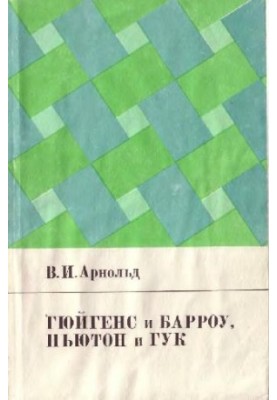Huygens and Barrow, Newton and Hooke. The first steps of mathematical analysis and catastrophe theory, from evolution to quasicrystals
 Instant download
Instant download
after payment (24/7)
 Wide range of formats
Wide range of formats
(for all gadgets)
 Full book
Full book
(including for Apple and Android)
Huygens and Barrow, Newton and Hooke . The First Steps in Mathematical Analysis and Catastrophe Theory, from Evolvent to Quasicrystals by Arnold B. and . It is a fascinating and deep immersion into the world of mathematics and physics, which will not leave indifferent any lover of science. In this work, the author, known for his outstanding work in the field of mathematics and mechanics, offers readers a unique opportunity to trace the evolution of mathematical analysis and catastrophe theory, from the first steps of great scientists to modern discoveries. The book begins with a historical context in which Arnold masterfully describes the contributions of such great minds as Christian Huygens, Isaac Newton, and Robert Hooke. These scientists became the founders of many mathematical and physical concepts that still remain relevant. Arnold does not just list facts, he creates a living picture of scientific progress, showing how the ideas of one generation affect subsequent ones. The reader will be able to see how simple observations and experiments lead to deep theoretical conclusions, which in turn open up new horizons for research. The book will be of interest to a wide range of readers: from students and teachers studying mathematics and physics, to science lovers who want to expand their knowledge about the development of scientific thought. If you are passionate about topics related to mathematical analysis, catastrophe theory, and also want to understand how these areas are interconnected with the real world, then this work will be a real discovery for you. Arnold uses accessible language and illustrative examples, which makes complex concepts understandable even for those who do not have in-depth knowledge in this area. The topics raised in the book cover a wide range of issues, from the basics of mathematical analysis to complex theories such as quasicrystals and evolvents. Arnold raises important questions about how mathematical models help us understand complex systems and phenomena in nature. It shows how catastrophe theory can explain unexpected changes in systems, whether in physics, biology, or even the social sciences. This book is not only about mathematics, but also about how science can help us better understand the world around us. Arnold's Style W. and . is clear and logical, which makes his work available to a wide audience. He is able to combine deep theoretical knowledge with practical examples, which allows the reader not only to assimilate the material, but also to apply it in practice. Other well-known works of the author, such as Geometry and Topology and Mathematical Physics, also demonstrate his ability to deeply analyze and clearly state complex ideas. If you are looking for a book that will not only expand your knowledge, but also inspire new discoveries, “Huygens and Barrow, Newton and Hook” will be an excellent choice. This is a work that not only tells about the past, but also opens the door to the future of science, allowing the reader to feel how mathematics and physics continue to develop and influence our lives. Do not miss the chance to immerse yourself in this fascinating world, where each paragraph can be the beginning of your own scientific journey.
LF/253576758/R
Data sheet
- Name of the Author
- Арнольд В.И.
- Language
- Russian
- ISBN
- 9785020139350
- Release date
- 1989



























